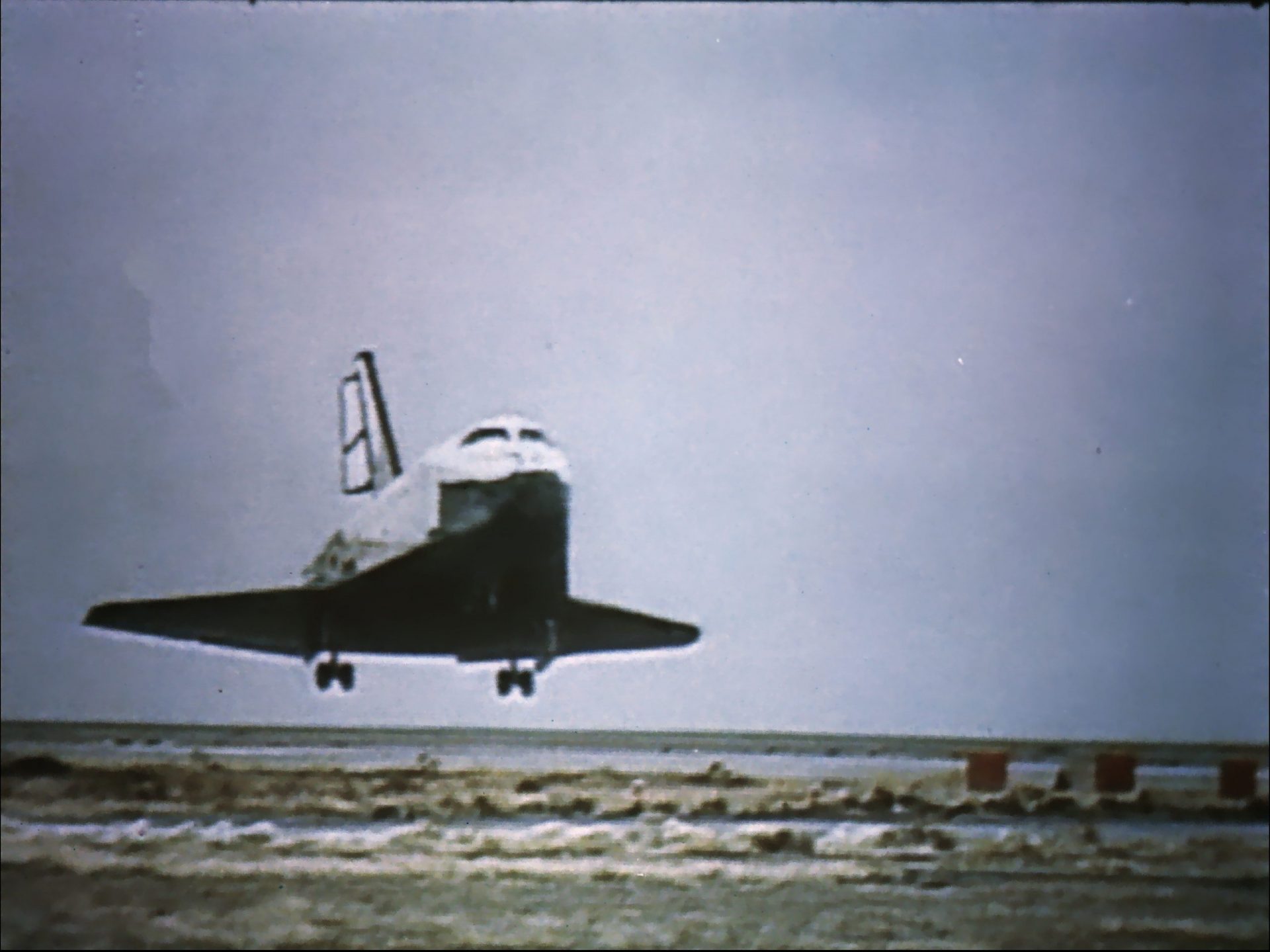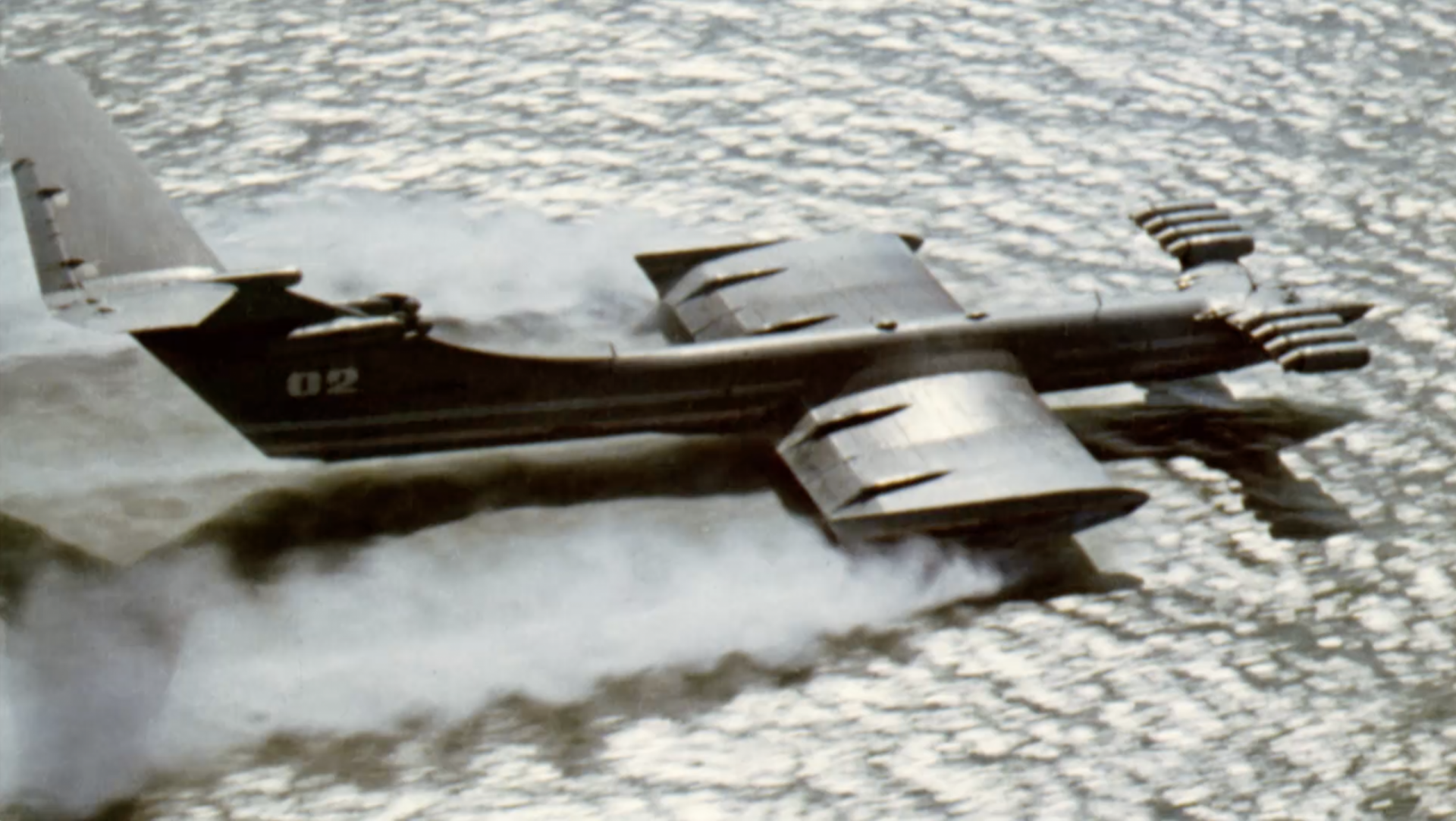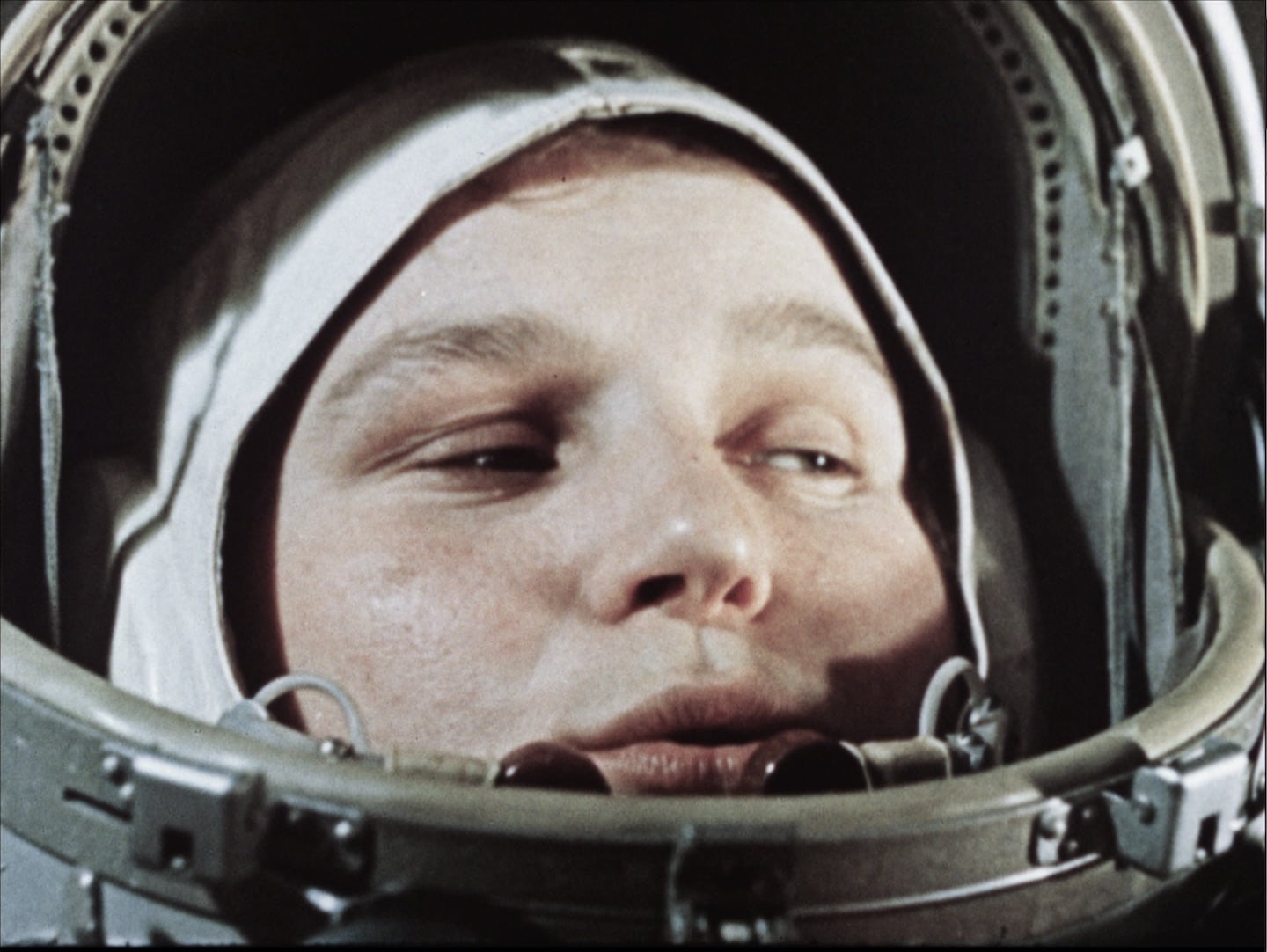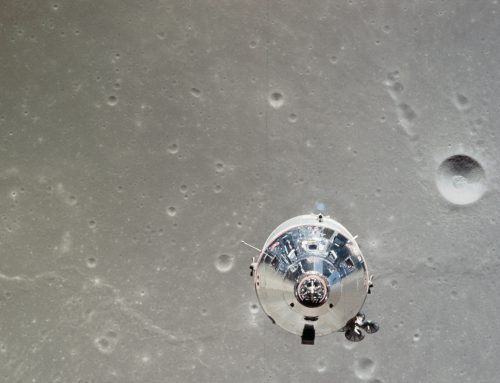Secrets of Soviet Technology
Most people combine simple but robust equipment for the Siberian steppe with technology from the Soviet Union. Very few people know that Russia has been one of the world’s leading high-tech nations for many decades. Hardly anyone has ever seen the “Caspian Monster”, a flying ship. Or has flown with the Soviet Concorde. Who knows the Soviet Buran shuttle or still knows about the first woman in space? Russian technicians fulfilled human dreams. They served the prestige of a system that considered itself superior in science and technology. The film shows with newly discovered, fascinating shots from Russian technology archives secrets of a lost empire.
Soviet technical projects

The Tokamak
In the mid-1950s Andrei Sakharov and Igor Tamm designed the Tokamak fusion reactor. In a Tokamak, a plasma heated to many millions of degrees is enclosed in a ring-shaped magnetic field so that it floats without contact, as Harald Lesch explains in the film. The nuclear fusion reactions take place in this plasma, in which enormous amounts of energy are generated. A fusion reactor is comparatively clean. This is because no high-level radioactive waste materials are produced. It burns "water" and provides us with an inexhaustible source of energy. The technical hurdles, however, are enormous. Because a plasma heated to over 100 million degrees can only be kept stable with great effort.
In the Soviet Union, the Tokamak reactor was developed at the Moscow Kurtschatow Institute under the leadership of Lev Arzimowitsch. As Denis Kalupin tells in the film, temperatures of 10 million degrees were reached for the first time at the end of the 60s. This was proof of the feasibility of the Tokamak concept. Despite the Cold War, further research and development is already taking place in international cooperation between nuclear physicists. Today, Tokamak test facilities are located in Culham, Great Britain, Garching near Munich, Russia, Korea, Japan and the USA. The ITER fusion reactor currently under construction in southern France is to generate more energy than is needed to heat the plasma for the first time. Power generation, if ITER were to work, would be possible with the next larger DEMO power plant. Lev Arzimowitsch has already answered the question of when the first functioning Tokamak power plant will be built: "When mankind needs it or a little earlier".


Departure into the cosmos
After the war, Korolyov becomes head of the Russian missile program. The missiles are designed for military purposes, they should be able to carry nuclear warheads to America. But after Stalin's death Korolyov succeeds in convincing Khrushchev, the party leader, to use the operational R7 rocket for a space flight of a satellite. For the international geophysical year 1957 proclaimed by the UNO, the Sputnik is successfully launched into space with an R7 rocket. A triumph of Soviet technology, which triggered the "Sputnik shock" in the USA, because it showed how small and vulnerable the USA had become. This is how historians Julia Richers tells it in the film, which deals with Soviet space travel.

The Space Firsts
As a result, Koroljow succeeds in reaching Space Firsts by the dozen: Yuri Gagarin, the first man in space, Valentina Tereschkowa, the first woman in space, Alexei Leonov, the first man to float freely in space.

Failure at moon flight
The coronation should have been the first flight to the moon. The Americans are lagging behind, but with the Apollo program they are using enormous resources to win the race to the moon. Koroljow's early death shocks the Russian space program - he cannot finish constructing the N1 moon rocket he designed. In February 1969 the launch attempt of this rocket and thus the Soviet moon flight program fails. In July 1969, an American was the first man to set foot on the moon.

Salyut Space Station
After the failure of the moon program N1 Soviet spaceflight concentrates on the development of space stations. Here, too, military considerations were at the beginning, the cosmonauts should photograph the territory of the enemy from space. But the Saljut program soon became a civilian project.
The Russian developments for the coupling of space ships and the modular construction of a space station are groundbreaking. One episode remains the Apollo Soyuz program in 1975, in which an American and a Soviet spacecraft dock in space for the first time. Alexei Leonov's famous handshake with Thomas Stafford remains an episode - until American flights to the MIR station and the ISS take place after the end of the Soviet Union.

The TU144 supersonic airliner
When the British and French presented their project for the supersonic Concorde airliner at the end of the 50s, Khrushchev followed suit. The Soviet Union will also be the first in this field. Andrej Tupolev's design office is commissioned to build a similar superplane in only 5 years. The TU144 will be similar to its competitor Concorde in many details. On New Year's Eve 1968 the time has come: The Tupolov 144 rolls to its maiden flight and takeoff and landing are flawless. Once again the Soviet Union has reached its destination before its western competitors and opens the supposedly promising era of supersonic passenger flights. In the film Robert Kluge explains the connections.
TU 144 successfully completes many more test flights, but in May 1973 a plane crashes spectacularly from the sky at the air show in Le Bourget near Paris. The crash obviously had no technical causes, but the damage to the image was enormous. Although the TU144 still started operating between Moscow and Alma Ata, the completely uneconomical project was quickly abandoned.

Buran
The last major Soviet space project was the Buran shuttle, which was constructed in the 1980s. It was to serve military purposes, like the US Space Shuttle. Buran could take off and land fully automatically. The maiden flight of the massive Energia rocket with a Buran spacecraft on November 15, 1988 was flawless. The problem of the shuttles is their lack of economic efficiency. A 105-ton spacecraft has to be shot into space with a maximum payload of 30 tons. The good old Soyuz rocket is much cheaper and more efficient. Because it needs energy for 20 tons payload without a heavy additional apparatus to transport.

Ekranoplan
Another object in the film is the Ekranoplan. You can see the A-90 Orljonok and the airplane "KM" - the "Caspian Monster". The Ekranoplan is a ground effect plane, a kind of hermaphrodite between ship and plane. It takes off in the water and rises with increasing speed up to about 10 meters altitude.
There it can fly forward with 500 Kmh. However, the big problem is the curve flight. It always carries the risk of water contact. For this reason several test machines have had an accident. When the military lost interest in the aircraft, the end of the 80s came for the exotic planes. Ekranoplanes were a further development of hydrofoil boats, such as the Meteor type, which are still in use on Russian waters and in the Mediterranean today. The British counterpart Hoovercraft hovercraft has also been mothballed.
Technology and Soviet society
Education, science and technology
"Science and technology played a special role in the history of the Soviet Union," explains Dr. Mikhail Turnyanskiy of the EURO-fusion organization. EUROfusion coordinates the activities of the European states in the construction of the Tokamak fusion reactor ITER in Southern France. Dr. Turnyanskiy emphasizes the special role of the broad educational efforts that the Soviet leadership began immediately after the October Revolution of 1917. For the communist revolutionaries, the fulfilment of their dreams for the future was linked to the development of education, science and technology.
Consequences of Stalinism
The period of Stalinism, in which numerous scientists and technicians were arrested and disappeared in the GULAG, significantly slowed down the modernization of Russia, but after the Second World War the technological change accelerated rapidly. "If you imagine the state in which the Soviet Union was after the Second World War and that only 10 years later this country was able to transport the first Sputnik into space, then this is something that has astonished the world public," explains the historian Professor Julia Richers of the University of Bern.
Technology and the Cold War
Many of the major Soviet technological projects are related to the Cold War arms race. So was space travel. Or nuclear energy - in the form of nuclear fission and fusion. But Soviet scientists and engineers are intensively involved in civilian projects. So Andrei Sakharov, who later won the Nobel Peace Prize. Sakharov was shocked by the effect of the H-bomb, which he had co-developed himself. "Your test changed everything in me," he writes in his memoirs.
A further example is Sergej Koroljow, the developer of the R7 rocket, which carried the Sputnik into space and is still very reliable as Soyuz rocket in civil space travel. Korolyov convinces the party and state leader Nikita Khrushchev of the benefits of civil space travel - for the prestige of the country and for science. The launch of Sputnik, mankind's first earth satellite, and Yuri Gagarin, mankind's first space traveler, stand for the great pioneering achievements of Soviet technology. Just as the first woman in space, Valentina Tereshkova, became the celebrated symbol of the social world of socialism, in which equality between men and women was to be achieved. Prestige and propaganda play a major role in financing major technological projects.
The technological superpower
At the end of the 1950s, the Soviet Union presented itself as an impressive scientific and technological power. "Soviet science and technology was then among the best in the world," explains Professor Paul Josephson of Maine University. The negative sides of Stalinism seem to have been overcome and the road to a bright communist future seems wide open. But it comes differently.
The Brezhnev Era - Time of Stagnation
As early as the mid-1960s, the technological innovative power of the Soviet Union began to weaken. The reasons for the demolition of the Soviet success story lie deeply in the system of the Soviet planned economy and in the changed leadership of the country. The charismatic and impulsive Khrushchev, under which the great successes could be celebrated, was replaced by Leonid Brezhnev after the Cuban crisis. While before it was often instinctive to focus on the right projects, now a bureaucratic regime like mildew is spreading over research and technology.
The weaknesses of the planned economy and the traditional command structures in society come to light in the failure of prestigious technical projects: the Soviet lunar flight program fails, the first supersonic aircraft, the Tupolev 144, becomes an expensive flop. Sloppiness and a lack of technological level, especially in microelectronics, cause scientists and technicians serious problems to continue on their chosen paths. "It doesn't work to decree from above, 'You will be innovative' or 'You will do this and that new thing in five years', because how can you plan tomorrow's inventions if you can't even know which they will be," historian Paul Josephson describes the context.
The investments required for the increasingly complex tasks of researching microelectronics for control systems and regulators are being "missed out" in the Soviet Union, as the researcher Klaus Gestwa puts it in his film.
On the other hand, toughness and endurance are typical Russian characteristics. In nuclear physics, the Soviet research teams around Lev A. Artsimowitsch made their breakthrough in the late 1960s. "At the Kurtschatow Institute in Moscow they managed to reach temperatures of over 10 million degrees for the first time with the Tokamak," says Dr. Denis Kalupin of EURO-FUSION, and the Munich physicist Professor Harald Lesch adds: "Immediately a lively scientific tourism to Moscow developed. And the Tokamak principle became the recognized concept in fusion reactor research."
The collapse and what remains for us
The Brezhnev era ends in the 1970s with the loss of the Soviet Union's technological leadership in some areas. The country slides towards collapse. Professor Klaus Gestwa of the University of Tübingen describes the state of the Soviet Union as an "archaic modernization built on the heavy industry of coal, oil and steel. With his reforms, Gorbachev tries to turn the tide. During his time in space technology, he once again developed major projects. The space station MIR and the Soviet Space Shuttle Buran. The Buran experiences a tragic fate. As soon as it is finished, the Soviet empire collapses and the project is buried under the rubble. But the ISS space station, based in core and concept on further developed modules of the MIR, again shows what remains: the international peaceful cooperation in scientific and technical projects.
Alongside the ISS, the ITER reactor is the second major symbol of international cooperation based on former Soviet research. On the basis of Andrey Sakharov's theoretical considerations, the fusion power plant ITER is today being built jointly by 34 nations. The Tokamak could meet the energy needs of technical civilization in a clean and climate-neutral way. Andrei Sakharov's dream, which he communicated to the world public in his famous memorandum "Reflections on Progress, Peaceful Coexistence and Intellectual Freedom" of summer 1968, consisted precisely in this: in the peaceful cooperation of the world community for scientific, technical and civilisational progress.



